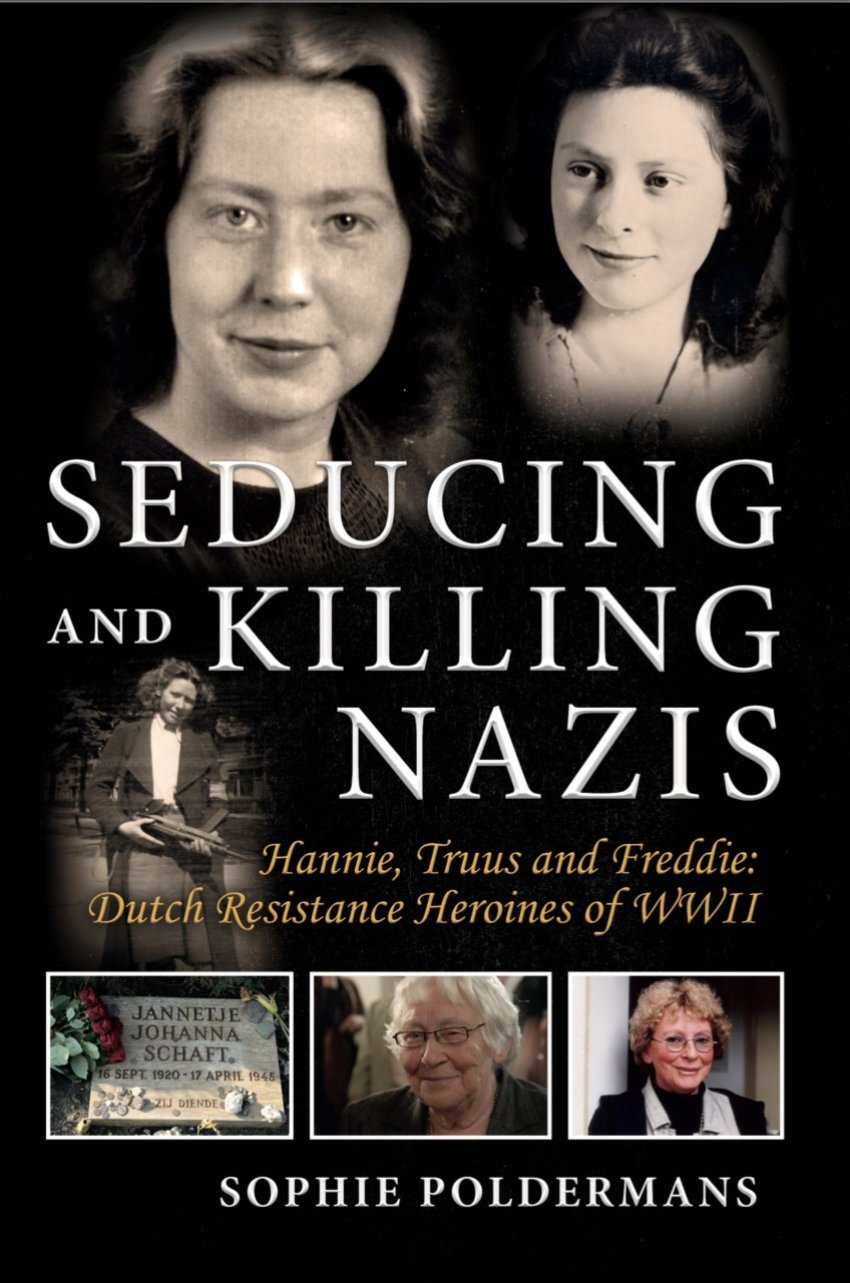
Seducing and Killing Nazis - Hannie, Truus and Freddie: Dutch Resistance Heroines of WWII
By Sophie Poldermans
SWW Press, 2019, 189 pp., $42.00
Available from https://seducingandkillingnazis.com/
Beginning in May 1940, Nazi Germany invaded and occupied Holland. The military invasion was comparatively easy; the Occupation was fraught.
Less than a year after seizing the country, the Nazis were confronted by a general strike protesting the mistreatment of Jews. This was the only such strike in Occupied Europe in World War II. As Sophie Poldermans records: “It stirred up resistance throughout the Netherlands.”
Among those who risked their lives in the struggle were three young women: Hannie Schaft and the sisters, Truus and Freddie Oversteegen. At the time of the invasion Hannie was 19, Truus was 16 and Freddie was 14.
Schaft’s family political background was social-democratic. The Oversteegen family was Communist and became active in sheltering Jewish refugees well before the war.
As militants of the Communist-organised Council of Resistance (RVV), the young women participated in the widest scope of activities. They transported and hid Jewish refugees, stole documents that provided forged identity papers for both fighters and refugees and blew up militarily sensitive infrastructure.
Most famously, they were assigned to kill senior German officers.
They would pose as “Moffen girls”, which is Dutch slang for young women willing to have affairs with German soldiers. They would hang out in bars with officers and, when they were suitably inebriated, suggest a romantic, moonlit stroll in the woods. Once safely away from prying eyes they would assassinate the officers and dispose of their bodies.
They also assassinated Dutch collaborators and spies.
The Nazis had a support base among the about 5% of the Dutch population that supported the National Socialist Movement (NSB), the Dutch Nazis. From among the NSB, the Germans obtained police agents and community spies. They also established a Dutch branch of the SS.
Often the SS would force people to witness their barbarity. On one occasion Truss came upon a Dutch SS soldier killing a baby.
“He grabbed the baby and hit it against the wall. The father and sister had to watch. They were obviously hysterical. The child was dead. I shot that guy. Right there and then. That wasn’t an assignment, but I don’t regret it.”
The young women were very conscious about the morality of their actions. As Truus explained to Poldermans: “We were dealing with cancerous tumours in society that you had to cut out like a surgeon. You couldn’t say, ‘Hey, mister, you’re doing it wrong,’ because then you would risk a bullet through your head, you couldn’t arrest him… There was no other solution. That is the cruelty of war. You couldn’t try these people at that moment either.”
She emphasised: “What I want to pass on to young people is that if you have to make a decision that decision must be a right one and you must always remain human.”
By 1944 the Germans had a description of Schaft and were pursuing her. She dyed her distinctive red hair black and wore false eye-glasses. Her parents were taken as hostages and it appears that even Nazi leader Adolf Hitler took a personal interest in her capture.
The winter of 1944-45 is known as the Hunger Winter in Holland. The Germans seized all railway transport for their military operations against the D-Day landing. This stopped the supply of food in Holland and 20,000 people starved to death.
The RVV, including Schaft, Truus and Freddie stepped up their operations.
In March, 1945 Hannie and Truus attempted to assassinate a collaborator. On the run from the military police they ran into a café, knowing that the owner was suspect.
Truus pulled out her gun and announced to the patrons: “Gentlemen, your attention please, we’re coming in now, but when the Germans come we’ve been here all afternoon. If you do not behave the way we want you to, and we’re on our way to heaven, we will take a few of you with us. We do not intend to just give up.”
They ordered drinks to get alcohol on their breath and pretended to be drunk when the German soldiers arrived. When an officer came in Truus threw her arms around his neck shouting, “Ha Heinz, come here!” She kept annoying him until the Germans left in disgust.
On March 21, 1945 Schaft was arrested at a Nazi checkpoint, caught while transporting underground publications. Her captors realised quickly that she was the red-haired assassin they had been chasing.
She was tortured but never divulged information, though she did admit to assassinations that she had performed, thus saving the lives of hostages the Germans had taken in reprisal.
On April 17, three weeks before Liberation, she was taken to her execution ground in the sand dunes outside Haarlem, where hundreds of Resistance fighters were buried. Her murderers were a German soldier and Dutch police collaborator.
Their first shot missed her head but hit her ear. “Idiot,” Schaft shouted. “I shoot better.” The next shots ended her life.
In late 1945 all the Resistance fighters’ bodies were reburied in a national memorial cemetery. Schaft is the only woman buried there.
Following WWII, the Dutch Communist youth would commemorate Schaft on the anniversary of her reburial. However, in 1951, that commemoration was banned and police with armoured cars prevented the march.
Holland, like West Germany did not fully de-Nazify following the war and many collaborators and ex-NSB members remained in important positions. They fanned an anti-Communist repressive wave through the 1950s.
However, since 1996 commemorations and an annual lecture in Schaft’s honour have been organised by the National Hannie Schaft Foundation, established by Truus and Freddie Oversteegen. Sophie Poldermans, the author of this gripping biography is a leading figure in that foundation.